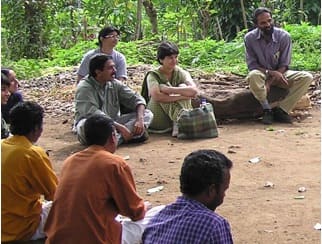
Sustainable livelihoods
“A livelihood comprises the capabilities, assets (including both material and social resources), and activities required to secure the means of living. A livelihood is sustainable when it can cope with and recover from stresses and shocks and maintain or enhance its capabilities and assets both now and in the future, while not undermining the natural resource base”.[1] Living sustainably (‘having a sustainable livelihood’) is an important component and indicator of individual and community wellbeing.
Understanding whether sustainable livelihoods are in place requires a holistic approach, able to look at the interactions between biodiversity and the ecological functions of the natural environment and the cultural, social, institutional and economic practices of the relevant community. The assets, capabilities and activities required to secure the means of living generally include natural resources (e.g., farmland, water, livestock, forests, wildlife – including pollinators and fisheries – minerals…), economic resources (e.g., buildings, stored goods, machineries, utensils, equipment, cash…), intangible assets (e.g., institutional capacities, knowledge and know-how, respect…), social resources (e.g., networks, relationships, social cohesion…) and communal practices (e.g., enforcement of rules, surveillance activities…).
In the context of ICCAs—territories of life, sustainable livelihoods comprise all those assets, capabilities and activities that a community requires to be able to maintain its own livelihoods but also to maintain the web of relationships that promote its well-being and ensure the exercise of its collective responsibility towards the local environment – including the conservation of ecosystem functions and biological diversity. For that, ‘sustainable livelihoods’ requires the maintenance of the diversity of life– human as well as not human. It requires the functioning of governance institutions that regulate access to, and use of, land, water, air, biodiversity and other gifts of nature (see #Governance). And it requires national and international policy regimes that are favourable and not detrimental to livelihoods. Sustainable livelihoods demand the engagement of the custodian communities, or representatives trusted by them, at all these levels.[2]
Key references:
Chambers and Conway, 1992; Singh, 1996; Krantz, 2001; Cooney et al., 2018.
See also: Sustainable Development Goals
[1] Chambers and Conway, 1992.
[2] Cooney et al., 2018.